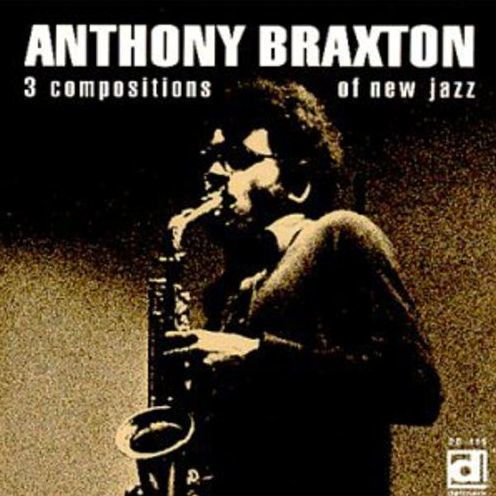While it is not as powerful or as revelatory as
For Alto,
Anthony Braxton's second album for
Delmark,
3 Compositions of New Jazz is his debut as a leader and showcases just how visionary -- or out to lunch depending on your point of view -- he was from the very beginning. Recorded nine months after his debut with
Muhal Richard Abrams on
Levels and Degrees of Light,
Braxton's compositional methodology and his sense of creating a band are in full flower. For one thing, there is no use of a traditional rhythm section, though drums and a piano are used. The band is comprised of
Leroy Jenkins on violin and percussion,
Braxton on everything from alto to accordion to mixer,
Leo Smith on trumpet and bottles, and
Abrams on piano (and alto clarinet on one track). All but one track --
"The Bell" -- are graphically titled, so there's no use mentioning titles because computers don't draw in the same way. There is a sonorous unity on all of these compositions, which
Braxton would draw away from later. His use of
Stockhausen is evident here, and he borrows heavily from the melodic precepts of
Ornette Coleman. The use of
Jenkins' violin as a melodic and lyric device frees the brass from following any kind of preset notion about what should be done.
Abrams plays the piano like a percussion -- not a rhythm -- instrument, and colors the textural figures in, while
Smith plays all around the open space trying hard not to fill it. This is a long and tough listen, but it's a light one in comparison to
For Alto. And make no mistake: It is outrageously forward-thinking, if not -- arguably -- downright visionary.
Braxton's
3 Compositions of New Jazz is an essential document of the beginning of the end. ~ Thom Jurek






